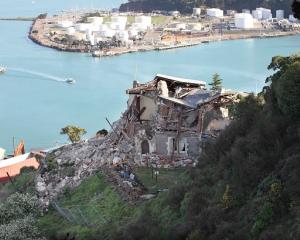The announcement this week the Institute of Professional Engineers New Zealand has dropped its investigation into civil engineer Alan Reay is another blow for the long-suffering families of victims of the Canterbury Television building collapse.
Dr Reay's company designed the six-storey CTV building, which catastrophically collapsed in the February 22, 2011 earthquake, claiming 115 lives.
The hopes of the families were pinned on the investigation, following the findings by the Canterbury Earthquakes Royal Commission of Inquiry.
The third and final part of the commission's report into the earthquakes, released in December 2012, was a damning indictment of various individuals and organisations, finding 20 years' worth of engineering, construction and council errors and failures led to the building's collapse, but it was most critical of Dr Reay, the principal engineer, whose company, then named Alan Reay Consultants Ltd designed the building.
Dr Reay was criticised for tasking structural engineer David Harding with the design of the building despite his inexperience, failing to adequately supervise him, not reviewing the design plans, and convincing council buildings engineer Graeme Tapper to sign off the building.
The role of the commission was not to apportion liability, however, and in the inquiry's wake victims sought to hold to account those involved in the building's failings. A group of relatives subsequently laid a complaint with Ipenz, and hoped its investigation would provide accountability.
They are understandably shocked by its revelations that Dr Reay had resigned from the industry's professional body on February 28 and that the legal advice the organisation had subsequently taken was it could no longer investigate any professional work undertaken by him before he registered as a chartered professional engineer in 2011.
Dr Reay had been fighting through the High Court to stop the investigation, saying Ipenz lacked the jurisdiction to investigate him.
This week he stated his resignation from Ipenz had nothing to do with its investigation into him and ''what might happen in the future'' but that he had ''come to have a complete lack of faith and trust in Ipenz generally'', that it had failed to learn safety lessons from the quakes and responded negatively to some of his requests.
Faith and trust have been at the heart of the issue for families, too. Some of the bereaved have said they feel Dr Reay's resignation and reasons for it are disingenuous.
And some have said Ipenz should not have accepted his resignation and pushed on with the investigation. Ipenz itself has called for a law change that would allow non-members to be investigated.
Regardless of how the bereaved feel, and the reason behind the latest turn of events, the sad reality is there is one less avenue open to the families and many will feel abandoned all over again.
The Ministry of Business, Innovation and Employment's chief engineer laid a separate complaint with Ipenz, but the ministry has no other action pending.
The only hope for justice for the families now appears to lie with engineering firm Beca, which is reviewing the building collapse for police to see whether a criminal investigation can be undertaken.
For some, the road to justice has already been too long, as it has for some of families of the Pike River miners killed in the November 2010 explosions.
But many of the bereaved feel there can be no closure until they have justice for their loved ones. For them, there is again no end in sight.
And another thing
The colourful Shane Jones signed off from Parliament this week with customary humour and aplomb.
In a chamber more often reminiscent of an ugly bear pit, his oratory will be missed. More significantly, Mr Jones' frank speaking was widely appreciated.
His style was to call it as he saw it, even when that upset liberal sensibilities.
In particular, he clashed with the Greens, seeing jobs as a priority, particularly in Northland.
As commentators have explained, Mr Jones also leaves a serious hole in Labour's ranks. It was he, more than most others, who appealed to traditional blue-collar Labour supporters.






